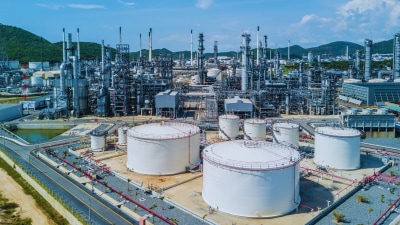In 1989, Amartya Sen offered a lucid, comparative assessment of India’s development experience in the first four decades since 1947. Post-1947 India did not have post-1949 China’s direct and massive public action to improve living conditions. This accounted for the fifteen-year difference in average life expectancy in the two countries by the late 1980s. If India had China’s lower mortality rates, “there would have been 3.8 million fewer deaths in India around the middle 1980s.” As Sen put it, “every eight years or so more people in addition die[d] in India—in comparison with Chinese mortality rates—than the total number that died in the gigantic Chinese famine.”
By 2019, China had gone through four decades of economic reforms launched by Deng Xiaoping in 19781979 while India completed nearly thirty years of liberalization begun in 1991. P. V. Narasimha Rao, prime minister from 1991 to 1996, instructed his finance minister, Manmohan Singh, to dismantle what had come to be called the permits, licenses, and subsidy raj. In mid-1991, India faced an acute balance-of-payments crisis, making it necessary to seek an International Monetary Fund loan to tide over it. However, the Indian state made a virtue out of necessity by removing the many barriers to the entry, expansion, and diversification of firms by proclaiming a new industrial policy. The stifling practice of licensing the use of industrial capacity was virtually abolished. The bureaucratic logjams on the road to economic development were gradually removed. These economic reforms addressed only the first part of a two-pronged problem facing Indian economic development. The reformers pulled back from overintervention by the state in certain sectors but did not redress state negligence of social sectors, especially health and education.
The phenomenon widely described as the rise of Asia since China’s engagement with the global economy since 1979 and India’s reforms since 1991 exhibits some striking disparities. In 1979, the size of the economies of China and India was roughly the same. After four decades of rapid growth, China’s economy was in 2019 nearly six times the size of India’s economy. Even though India accelerated steadily from the 3–4 percent plodding rate of growth of the 1947–1980 period in the last forty years, China grew much faster as it quickly became the manufacturing hub of the world exporting to overseas markets. The emphasis on health care and education in the Maoist era had also enhanced the quality of labor that served as the springboard for rapid economic development in the post-1979 era.
Giovanni Arrighi contended in his book Adam Smith in Beijing that “when the history of the second half of the twentieth century will be written” in a long perspective, the odds were that “no single theme will prove to be of greater significance than the economic renaissance of East Asia.” That renaissance in turn suggested that “Adam Smith’s prediction of an eventual equalization of power between the conquering West and the conquered non-West might finally come true.” China’s economic rise led Arrighi to confidently predict in 2007 “the realization of Smith’s vision of a world-market society based on greater equality among the world’s civilizations more likely than it ever was in the almost two and a half centuries since the publication of The Wealth of Nations.”
It is important to ask what the dramatic acceleration of economic growth rates in Asia—not just China—meant for the global balance of power and what impact it has had internally on the pressing problems of poverty and inequality. Although millions have been lifted out of poverty, wealth inequality and income inequality between the rich and the poor have increased exponentially. Also, the rise of Asia is not a linear story but one interrupted by downturns, such as the Asian financial crisis of 1997–1998, the global economic crisis of 2008, and the pandemic-induced downturn since 2020. India was better able to ride out the 1997–1998 crisis than several countries in Southeast Asia, especially Thailand, Indonesia, and the Philippines. The economic costs had occasional unintended political benefits, however, serving as a catalyst for the fall of the Suharto-era authoritarianism and a transition to more substantive democracy in Indonesia. Despite the downturns of 1997, 2008, and 2020, with China as creditor to the United States and Asia as a whole powering ahead in manufacturing and services, the relations between Asia and the West are much different today from what they were two centuries ago. In fact, the global economic crisis adversely affected the United States and Europe much more than China and Asia and can be seen to have contributed to the redressal of the balance in favor of Asia during the 2010s.
***
In 2019, Asia’s inexorable rise spearheaded by China seemed to be revolutionizing the global balance of economic and political power when the discovery of the SARS-CoV-2 novel virus in Wuhan at the end of the year ushered in an era of unprecedented anxiety and uncertainty. Any assessment of the impact of the global pandemic—formally declared by the World Health Organization in January 2020—on Asia’s historical trajectory must be somewhat tentative. The severe lockdown of the bustling capital of Hubei Province and later in 2022 of Shanghai and Beijing as well certainly dented the confident predictions that the future was destined to be Asian. Besides, Asian countries that fell into debt to China for its infrastructural developments on the eve of the pandemic faced economic crisis, as the example of Sri Lanka’s collapse in 2022 showed.
***
Even though India joined the Asian Infrastructure Investment Bank launched in January 2016 as a major stakeholder, it opted out of the largest free trade bloc in the world—the Regional Comprehensive Economic Partnership—comprising the ten ASEAN countries along with China, Japan, South Korea, Australia, and New Zealand that came into force in January 2022.
India emerged at a pace second only to China as Asia recovered in the early twenty-first century the global position it had lost in the late eighteenth century. Dynamic economic growth infused a new sense of confidence. India was able to cope with the global financial crisis of 2008–2009 in a more efficient manner than most countries of the world. Yet India’s performance in the areas of basic education and health care for the poor has left much to be desired in comparison with other countries of Asia, excepting Pakistan. India ran the risk, as Amartya Sen put it, of becoming half-California and half–sub-Saharan Africa. The rich in the major urban centers indulge in conspicuous consumption while the tribal peoples in India’s rural and forest heartland continue to suffer acute deprivation. Moreover, as China has moved up the manufacturing chain, countries like Vietnam, Cambodia, and
Bangladesh have taken its place as manufacturing centers with relatively low labor costs. India may have already missed that bus and is increasingly reliant on the buoyancy of the services sector as the agrarian sector continues to languish. If the forces of contemporary globalization have a dark underbelly, so do the flows of labor migration that constitute today’s Asian interregional arena. The pandemic contributed to the slowdown in the rate of economic growth across Asia. Yet it is not this deceleration of growth but distributional issues that pose the greater challenge to emergent states of Asia.
The economic trajectory of Asia in a broad global context yields one powerful insight or conclusion. Asia has prospered not through economic autarky but by mustering the political and cultural resources to set the terms of global engagement, something that was effectively denied in the colonial era throughout all of Asia excepting Japan. In this process of denial, colonized South and Southeast Asia suffered most grievously. It is by engaging with the global economy and recovering its own agency that much of Asia is being able not just to ride the upswings of the global economy but also to reduce vulnerabilities to its more volatile downturns, such as the one that gripped the world since 2008–2009. As the United States and parts of Europe turned inward, Asia saw an opportunity to enhance intra-Asian trade and investment while keeping the lines of economic exchange open with the rest of the world. The global pandemic has injected new uncertainties about the future of global interconnections. If only Asia was to address the problems of inequity alongside achieving rapid growth in a post-pandemic world, what many predict will be an Asian century can turn out to be a truly prosperous era in the history of the continent.
Excerpted with permission from HarperCollins.
Book: Asia After Europe: Imagining a Continent in the Long Twentieth Century
Author: Sugata Bose
Publisher: HarperCollins
Pp 288, Rs 699









